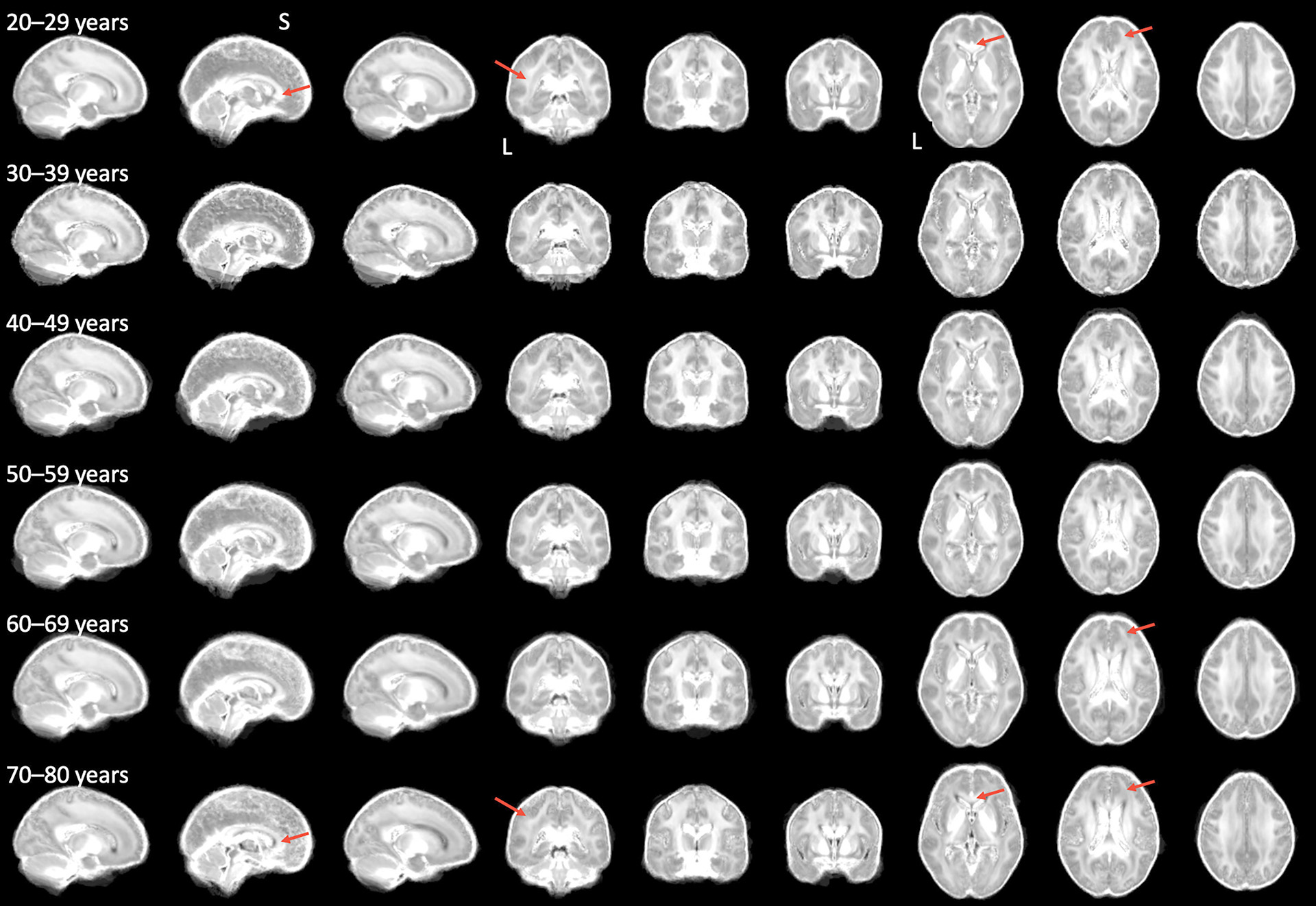
Aging and brain health
Waist circumference may provide insights into brain health,
which may affect chances for dementia, CSU researcher finds
story by Mark Gokavi
published Feb. 1, 2024
The war against Alzheimer’s disease needs new battle fronts, and newly published research from Colorado State University faculty member Aga Burzynska is providing new pathways to explore.
Burzynska’s recent research indicates a link between metabolic health and brain health that could lead to clues about age-related cognitive decline and dementia.
In two recent studies about risk factors in healthy adults and correlations within the brain’s wiring published by ScienceDirect.com, Burzynska’s team found that a greater risk of metabolic syndrome – especially greater combined body mass index (BMI) and waist circumference – correlates with lower brain myelin, the part of our brain’s tissue that allows fast conduction of electrical signals.
Myelin an evolutionary step
The brain is composed of gray matter that hosts the neurons, or brain cells, and white matter that contains connections between neurons. These long-distance connections, known as axons, can be compared to wires in a computer. They are wrapped in myelin, a protein- and lipid-rich substance that makes the electric signal “jump” along the axons, allowing for faster communication.
“Myelin makes human brains special,” said Burzynska, an associate professor in the Department of Human Development and Family Studies and an affiliate faculty member of CSU’s Columbine Health Systems Center for Healthy Aging. “Myelination within our brain was a huge evolutionary step. We often associate brain evolution with a more ‘folded’ brain surface, but in fact, it is the volume of white matter, deep inside our brains, that has allowed our brains to work like supercomputers.”
Burzynska and her colleagues collected data on overall metabolic health from 90 healthy people aged 20-79. Specifically, they calculated a “metabolic risk score” based on people’s blood pressure, BMI, waist circumference and history of elevated fasting blood sugar or abnormal cholesterol blood results.
They then used a magnetic resonance imaging (MRI) technique to estimate the content of myelin in the participants’ brains. To date, this technique has been used to monitor relapse and remission in multiple sclerosis. Only recently has it been used to study aging and dementia.
For decades, amyloid plaques in gray matter have been in the spotlight of Alzheimer’s research.
“I do believe that white matter has been understudied for decades because as we use this analogy of cables, it does imply a kind of passive infrastructure of the brain that only connects brain regions,” she said. “It is assumed that white matter is not involved in neuroplasticity or mechanisms of the disease, and after our brains develop, the white matter just deteriorates due to aging or disease. So, in my lab, we are trying to challenge this notion and study white matter at the detail that it has not been done before.”
Studies can support Alzheimer’s treatments

Burzynska said past research has shown that white matter deteriorates in people with dementia, maybe before amyloid plaques can be detected. Therefore, she said, lower brain myelin can mean an increased risk of dementia-related conditions like Alzheimer’s disease.
“Understanding these mechanisms could lead to the development of new therapies, diet and exercise interventions protecting myelin health,” Burzynska said. “Those approaches may help decelerate brain aging and support existing treatments of Alzheimer’s disease.”
The study participants were selected to represent healthy aging; they had no psychiatric, neurological or major health conditions.
“Even in our very healthy sample, the risks related to metabolic syndrome, especially to so-called visceral adiposity – larger waist circumference and BMI – still seemed to correlate with brain health,” Burzynska said. “This means that this association could be even stronger in people affected by metabolic disorders or obesity.”
The study was supported by the National Alzheimer’s Association and the National Institutes on Aging.
“There seems to be an association between our metabolic health and myelin in the brain, and although we do not yet fully understand the physiological or molecular mechanisms of this association, staying lean may be beneficial for our brain health,” Burzynska said of the research’s main takeaway. “In many ways, this is nothing new regarding recommendations for healthy aging. However, what is new is that we showed this direct link between increased adiposity (accumulation of body fat) and lower myelin in the brain.”
The discovery was made possible by the new MRI methods Burzynska’s team established at CSU. “Those non-standard MRI measurements are hard to implement and hard to analyze,” she said. “We are trying to do it a different way than it’s been done the last 20 years.”
Burzynska stressed that no MRI method is perfect and that modeling and inferences in data were used to develop estimates. “Direct measurement is only possible in cadavers, postmortem,” she said. “Our findings need to be replicated using other methods.”
Other findings
Burzynska also found that metabolic risk-myelin associations were independent of age, sex, race, blood pressure and socioeconomic status.
The findings suggest there is a peak in both myelin and axons around age 40. Burzynska said that means white matter develops and changes until midlife and declines after that. She noted that differs from the notion that we reach our peak biological development in the early 20s.
“This means we should try to care for our lifestyle to protect our brain during the entire adult lifespan, not only when we reach older age,” Burzynska said. “It points us into this important direction that keeping our body fat levels in check may be more important than we previously thought. I do believe we can do a lot in our middle life or earlier adulthood to postpone or even avoid some of those metabolic risks.”
The Department of Human Development and Family Studies is in the College of Health and Human Sciences.
Health and Human Sciences Matters podcast
The CSU Health and Human Sciences Matters podcast includes several episodes touching on healthy aging. They include:
Kayrn Hamilton from Health and Exercise Science chats about her integrative approach to studying age-associated chronic diseases.
Tom LaRocca from Health and Exercise Science talks about CSU’s Healthspan Biology Lab, which examines ways people can live longer in better health.
Maria Delgado from Design and Merchandising discusses home design and an aging population.
Manfred Diehl from Human Development and Family Sciences talks about healthy aging and his Aging Plus Program.
Arlene Schmid from Occupational Therapy chats about the lifelong benefits of yoga.
Healthy Aging
As a land-grant institution, Colorado State University is dedicated to serving as a catalyst for interdisciplinary research and community outreach, so that people can live the healthiest and most productive lives possible. This special report from SOURCE explores the work happening at CSU and provides insights into active aging.




